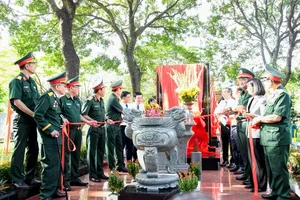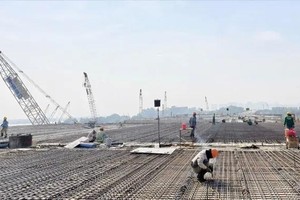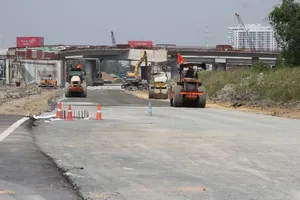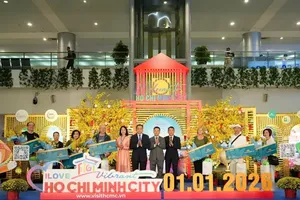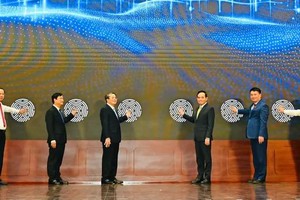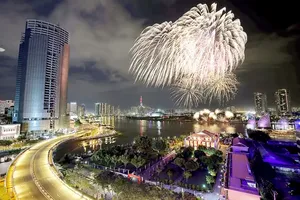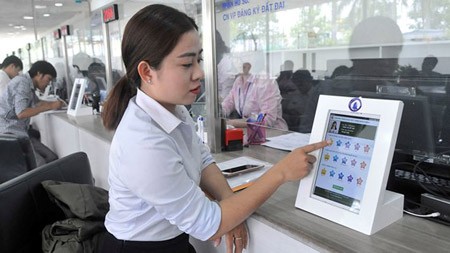
The project aims at changing the Eastern part of the city into an innovative district based on developing the digital and knowledge economy, along with building the 4 foundation pillars of task including management, database, application, and technology. Achievements in the year of 2018 have, to some extent, gradually added to the foreseeable success of the project.
Approved in November 2017, the Smart City project wants to make this city a pioneer in the aspect. To achieve all goals of this project, the metropolitan authorities have introduced the 4 key solutions, consisting of building a common database and developing an open database ecosystem, creating an operating center for a smart city, constructing a simulation center to forecast local socio-economic strategies, and forming an information security center.
Among the four, the creating of the operating center for the smart city is considered the most essential, and its first phase will go into effect in January 2019. The center will be sited in the HCMC People’s Committee, and is an integration of information from traffic monitoring camera systems, the camera system of the Management Center of Saigon Tunnel (MCST), and the security camera system installed in various location in the city.
Simultaneously, there will be an integration process for all information collected from the concentrated monitoring camera system, the 1022 hotline to handle urban infrastructure issues, the emergency hotline 113 – 114 – 115, and other channels of socio-economic news.
According to Mr. Le Quoc Cuong, Deputy Director of the HCMC Department of Information and Communications, this special solution possess the advanced feature of identifying faces, behaviors, actions; crowd management; tracking transport means, calculating traffic density and number of vehicles; identifying sounds and explosions or fires via images. After the 2-to-3-month experimental period, the city will evaluate this special system to prepare necessary investment procedures so that it will be officially launched in the middle of this year.
HCMC also announced its e-government structure, a comprehensive plan to synchronously implement information technology applications in all state offices of the city.
Until now, HCMC has already begun this process, effectively supporting the administration reform via the form of an interoperable electronic office with its 753 units. It is an online operation office, having around 3.4 million soft copies of state documents, 21,600 emails, and is piloting the task of charging administrative fees online through banks.
At the moment, the city has 493 level-three services and 59 level-four services operating online.
An aim of building an innovative district
Learning form experience of other cities in the world, the metropolitan authorities proposed to build an core innovative district, consisting of District 2, District 9, and Thu Duc District, to boost the fast and sustainable development of the city. The chosen districts possess the advantage of housing the Saigon High-tech Park (SHTP), international leading companies who have core technologies, a to-be financial center, and 12 universities.
This will be an zone of integration of value chains, businesses, and industries; a place of effective use of private as well as public resources to create incubation centers for those in need and necessary common infrastructure for commercial activities; an area to closely link scientific research and human resources training to manufacturing activities based on advanced technologies.
According to Associate Professor Dr. Huynh Thanh Dat, Director of the Vietnam National University – Ho Chi Minh City, an innovative district must have universities, where new research is carried out and capable human resources are trained in order to supply a limitless source of potential startups and creative people.
Associate Professor Dr. Le Hoai Quoc, Head of the Management Board of SHTP, shared that thanks to the cooperation between SHTP and the Vietnam National University – Ho Chi Minh City, there will exist a complete startup ecosystem, playing the leading role in fostering startup activities.
In the socio-economic development strategy of HCMC, the information – communications technology field has been highly appreciated, commented HCMC Party Chief Nguyen Thien Nhan in the recent awards ceremony for the 10th HCMC Information – Communications Technology Awards 2018.
He affirmed that the strongest and richest source that the city possess is the human resources themselves, with around 4.5 million people. Therefore, to take full advantage of this, the city needs to equip them with both professional skills as well as innovation ability and activeness.
The HCMC Department of Information and Communications announced that in January 2019, the first phase of the city’s shared database is operated in Quang Trung Software City. In the third quarter this year, there will be an audit for the second phase.
In January 2019, the city will construct the simulation center to forecast local socio-economic strategies (the first phase) in the HCMC Institute for Development Studies in order to serve the task of preparing documents for the upcoming 11th HCMC Party Congress.
January 2019 will also be the time for the approval of a pre-stage feasibility report for the construction of the simulation center – the second phase.
In December 2018, the HCMC People’s Committee approved the proposal to form the Operation Joint Stock Company for Information Security Center. Saigon Industry Corporation is responsible to perform this activity in the first quarter this year.
